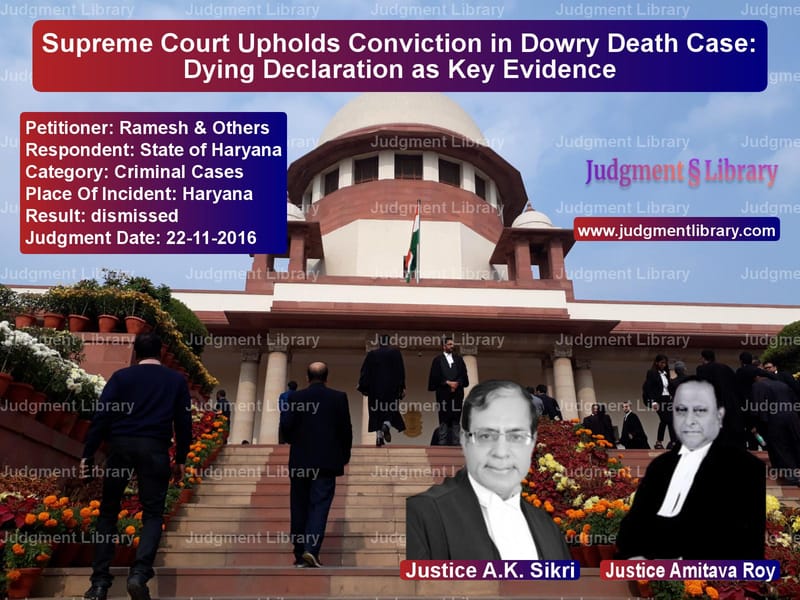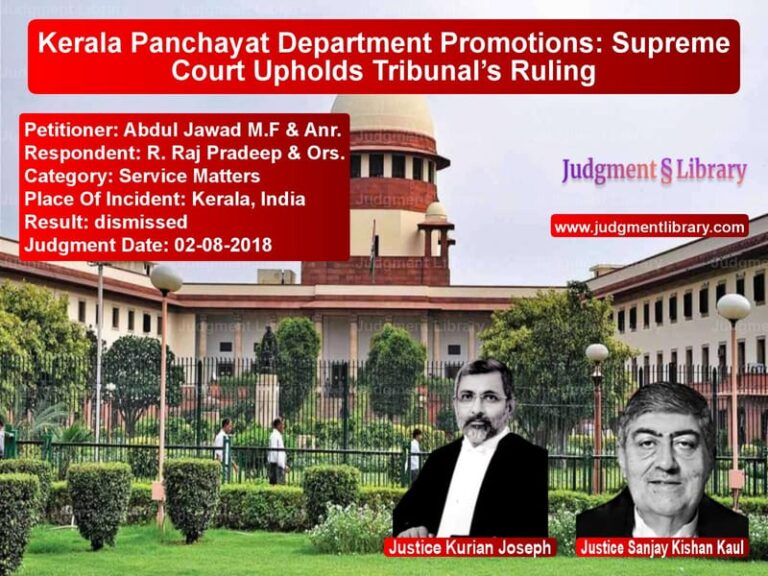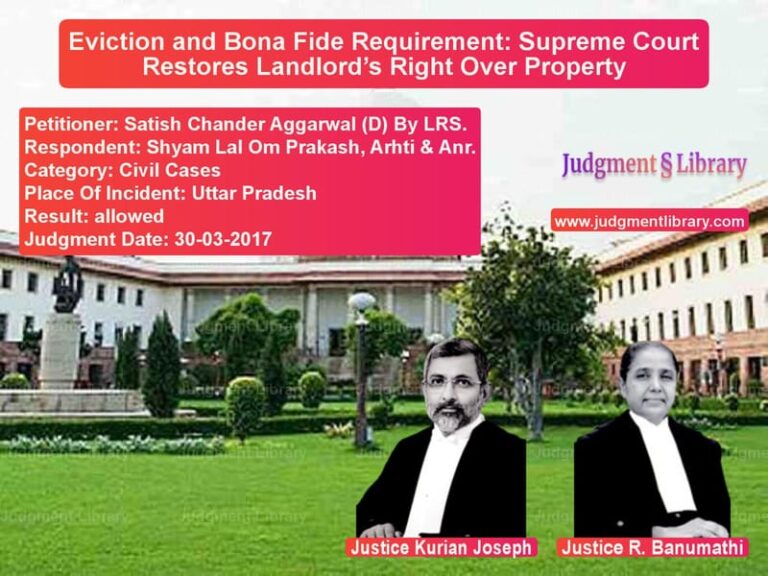Supreme Court Upholds Conviction in Dowry Death Case: Dying Declaration as Key Evidence
The case of Ramesh & Others vs. State of Haryana is a significant ruling by the Supreme Court of India concerning the conviction of the appellants for dowry death. Delivered on November 22, 2016, this judgment examines the credibility of a dying declaration and the legal principles surrounding its admissibility.
Background of the Case
The case revolves around the tragic death of Smt. Roshni, who was allegedly set ablaze by her husband Ramesh, his younger brother Suresh, his wife Saroj, and their mother Prem. The incident occurred in their matrimonial home in Haryana on September 20, 1999. Roshni suffered 100% burn injuries and succumbed to them later that night. Before her death, she made a dying declaration implicating the accused.
Initially, the Sessions Court acquitted all accused, citing inconsistencies in the evidence and questioning the reliability of the dying declaration. However, the Punjab and Haryana High Court overturned this acquittal and convicted them under Sections 302 and 498A IPC, sentencing them to life imprisonment. The appellants challenged this verdict in the Supreme Court.
Key Legal Issues Considered
- Was the dying declaration reliable and admissible as evidence?
- Did the High Court err in overturning the acquittal by the Sessions Court?
- Was there sufficient corroboration of the dying declaration?
Arguments Presented
Appellants’ (Ramesh & Others) Arguments:
- The dying declaration was unreliable due to Roshni’s 100% burns, which made it improbable that she could have made a coherent statement.
- The Sessions Court had rightly acquitted them, and the High Court should not have interfered.
- There was no independent corroboration of the dying declaration.
- The deceased’s brother Balraj (PW-4) testified that Ramesh was with him at the time of the incident, proving his innocence.
- The accused had themselves taken Roshni to the hospital, which contradicted the prosecution’s theory.
Respondent’s (State of Haryana) Arguments:
- The dying declaration was recorded by a Judicial Magistrate in the presence of a doctor, who certified that Roshni was mentally fit to make the statement.
- The declaration was clear, specific, and implicated the accused, making it admissible under Section 32 of the Indian Evidence Act.
- The High Court correctly found that the Sessions Court had wrongly disregarded the dying declaration.
- Witnesses turning hostile, including the victim’s brother, was due to pressure and intimidation.
Supreme Court’s Observations
The Supreme Court examined the dying declaration, corroborating evidence, and legal precedents. The Court noted:
“A dying declaration is admissible if it is given voluntarily, without external influence, and is recorded in a proper manner. The presence of a medical certificate about the victim’s fitness strengthens its reliability.”
The Court further observed:
- The dying declaration was recorded by a competent Magistrate after ensuring that Roshni was in a fit mental state.
- The Sessions Court erred by rejecting the dying declaration solely on the ground that she had suffered 100% burns.
- The High Court correctly reversed the acquittal, as there was no substantial reason to disregard the dying declaration.
- The fact that the accused took Roshni to the hospital did not absolve them of the crime.
- The claim that Ramesh was with PW-4 at the time of the incident was disproven by hospital records showing that he brought Roshni there.
Final Judgment
The Supreme Court ruled:
- The convictions of Ramesh, Suresh, Saroj, and Prem were upheld.
- They were sentenced to life imprisonment under Section 302 IPC and two years under Section 498A IPC.
- The appeal was dismissed.
Impact of the Judgment
This ruling has significant implications:
- It reaffirms the importance of dying declarations as substantive evidence.
- It sets a precedent that 100% burns do not automatically render a dying declaration unreliable.
- It emphasizes the need for judicial scrutiny when lower courts reject dying declarations.
- It highlights the role of witness protection in ensuring that key witnesses do not turn hostile.
Conclusion
The Supreme Court’s decision in Ramesh & Others vs. State of Haryana reinforces the judicial principle that dying declarations can serve as the sole basis for conviction when recorded properly. By upholding the High Court’s decision, the judgment ensures justice for victims of dowry-related crimes while affirming the judiciary’s commitment to upholding the rule of law.
Don’t miss out on the full details! Download the complete judgment in PDF format below and gain valuable insights instantly!
Download Judgment: Ramesh & Others vs State of Haryana Supreme Court of India Judgment Dated 22-11-2016.pdf
Direct Downlaod Judgment: Direct downlaod this Judgment
See all petitions in Dowry Cases
See all petitions in Domestic Violence
See all petitions in Murder Cases
See all petitions in Judgment by A.K. Sikri
See all petitions in Judgment by Amitava Roy
See all petitions in dismissed
See all petitions in supreme court of India judgments November 2016
See all petitions in 2016 judgments
See all posts in Criminal Cases Category
See all allowed petitions in Criminal Cases Category
See all Dismissed petitions in Criminal Cases Category
See all partially allowed petitions in Criminal Cases Category







